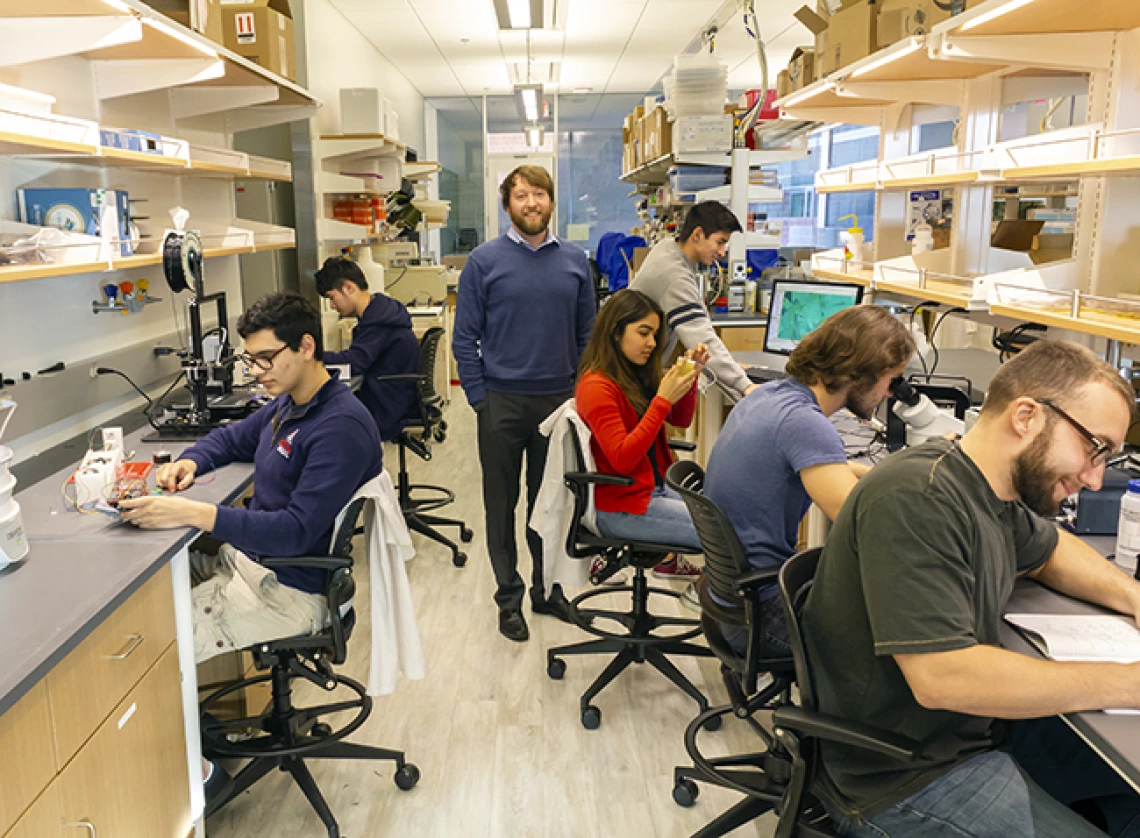Gutruf Researching Wireless, Battery-Free Patch That Senses Skin Health

Assistant professor Philipp Gutruf is leading a UA team that is joining with Northwestern University researchers to develop a wearable, wireless and battery-free device that can sense important markers of skin health such as hydration and vascularization.
Their paper, published in the journal “Small,” describes an ultrathin and flexible electronic device that features a miniaturized heater and sensor, which is applied to the location of interest on the body and senses properties of the underlying skin using small induced-temperature fluctuations. The sensor allows a precise readout of the thermal characteristics of the skin, which serves as a measure of hydration and blood flow in the vascular structure.
The patch communicates and receives its power wirelessly via near-field communication – a feature widely available in modern smartphones – enabling completely battery-free operation and omitting the need to recharge. The device applies as easily as a Band-Aid and allows continuous monitoring over a period of days, making it a suitable platform for at-home skin health checks.
“The thin patch features ultrathin flexible electronics that are laminated to the skin, offering unprecedented capabilities to investigate the thermal properties of the skin, which represent an important metric for skin health in general,” said Siddharth Krishnan, a member of the John A. Rogers research group at Northwestern University and lead author of the work.
“This soft and ultrathin, wireless and battery-free device class offers a platform to take clinical-grade monitoring to a patient or curious consumer and provide them with an effortless way to track their skin health and relay information back to the cloud to facilitate a diagnosis or monitor long-term treatment,” said Gutruf, co-senior author of the work. “We hope that this class of device is part of the beginning of digital medicine, where imperceptible devices worn on the body and interfaced with existing infrastructure such as smartphones inform individualized treatment and drastically improve outcomes in the future.”
